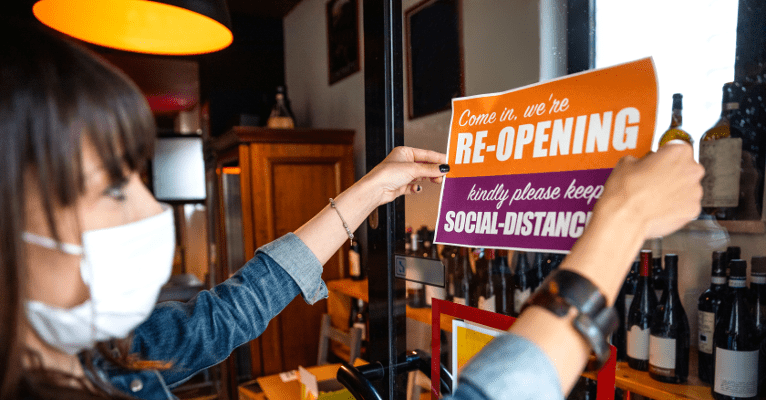Commerce Signals Consumer Spending Data Used in Analysis by Federal Reserve Bank of New York
The following excerpt is from a recently published article from the Federal Reserve Bank of New York. Their comprehensive analysis is refreshingly apolitical. Here’s a link to the full article. Commerce Signals, a Verisk Analytics business, provided the consumer spending data used in this analysis from our Covid-19 Consumer Spend Impact Dashboard.
Did State Reopenings Increase Consumer Spending?
The spread of COVID-19 in the United States has had a profound impact on economic activity. Beginning in March, most states imposed severe restrictions on households and businesses to slow the spread of the virus. This was followed by a gradual loosening of restrictions (“reopening”) starting in April. As the virus has re-emerged, a number of states have taken steps to reverse the reopening of their economies. For example, Texas and Florida closed bars again in June, and Arizona additionally paused operations of gyms and movie theatres. Taken together, these measures raise the question of how closures and reopenings affect consumer spending. In this post, we investigate how much consumer spending increased after the reopenings. It is important to stress that we are not expressing any views on the normative question of whether, when, or how states should loosen or tighten restrictions aimed at controlling the COVID-19 pandemic.
Measuring Consumption by State Using Card Transaction Data
Our analysis relies on detailed county-level debit and credit card transaction data obtained from Verisk Analytics. Verisk leverages a permissioned panel of around 40 million U.S. households. The data used for our analysis are balanced for the geographic distribution of the U.S. population. In addition, the aggregate trends from Verisk align well with national retail sales numbers. We aggregate the data to the state week level and combine it with detailed information on each state’s reopening from the New York Times. To make spending in different states comparable, for each state, we express weekly spending as a fraction of the average spending in January.

